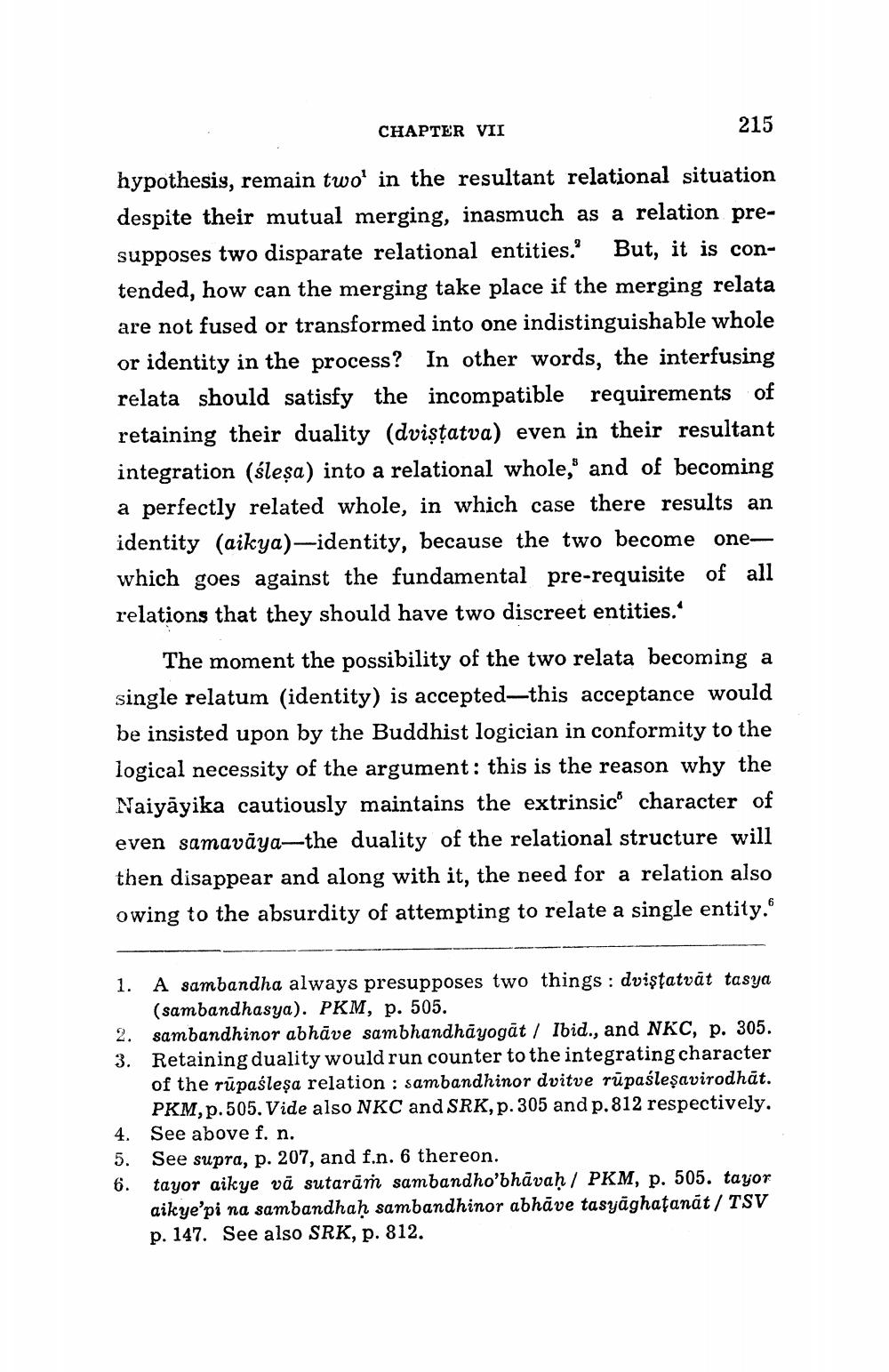________________
CHAPTER VII
215
hypothesis, remain two' in the resultant relational situation despite their mutual merging, inasmuch as a relation presupposes two disparate relational entities.' But, it is contended, how can the merging take place if the merging relata are not fused or transformed into one indistinguishable whole or identity in the process? In other words, the interfusing relata should satisfy the incompatible requirements of retaining their duality (dvisţatva) even in their resultant integration (ślesa) into a relational whole, and of becoming a perfectly related whole, in which case there results an identity (aikya)-identity, because the two become onewhich goes against the fundamental pre-requisite of all relations that they should have two discreet entities.
The moment the possibility of the two relata becoming a single relatum (identity) is accepted—this acceptance would be insisted upon by the Buddhist logician in conformity to the logical necessity of the argument: this is the reason why the Naiyāyika cautiously maintains the extrinsic character of even samavāya—the duality of the relational structure will then disappear and along with it, the need for a relation also owing to the absurdity of attempting to relate a single entity.
1. A sambandha always presupposes two things : dviştatvāt tasya
(sambandhasya). PKM, p. 505. 2. sambandhinor abhāve sambhandhāyogāt / Ibid., and NKC, p. 305. 3. Retaining duality would run counter to the integrating character
of the rūpaśleşa relation : sambandhinor dvitve rūpaśleşavirodhāt.
PKM, p.505. Vide also NKC and SRK, p. 305 and p.812 respectively. 4. See above f. n. 5. See supra, p. 207, and f.n. 6 thereon.
tayor aikye vã sutarāṁ sambandho'bhāvah / PKM, p. 505. tayor aikye'pi na sambandhaḥ sambandhinor abhāve tasyāghaganāt / TSV p. 147. See also SRK, p. 812.




